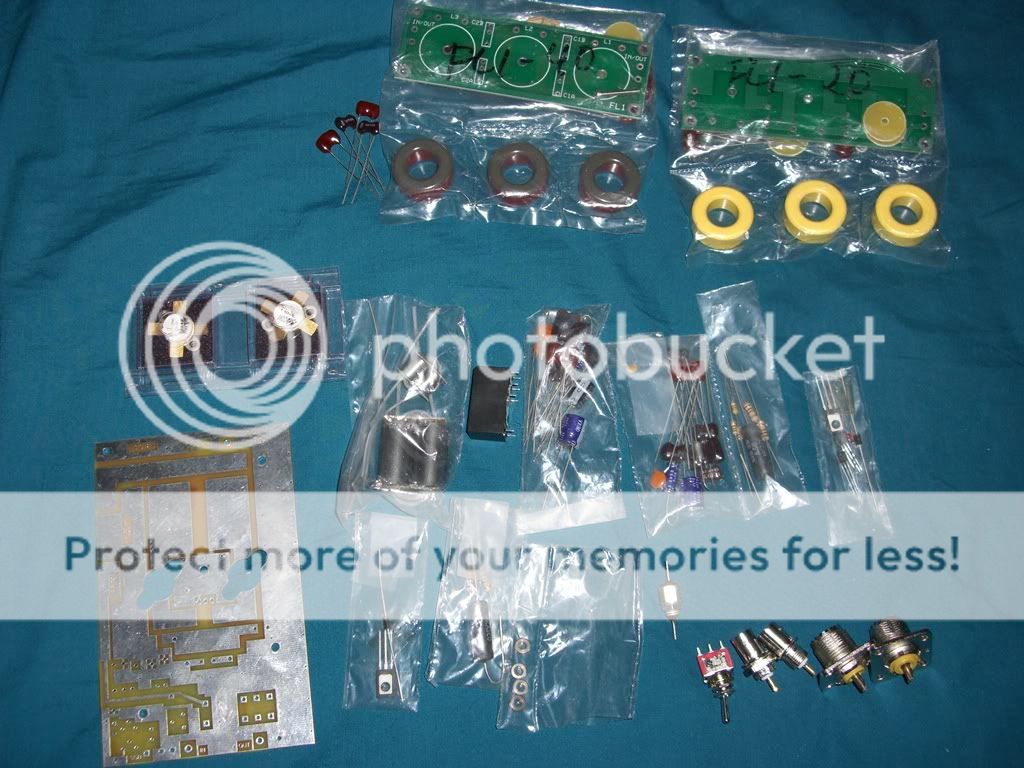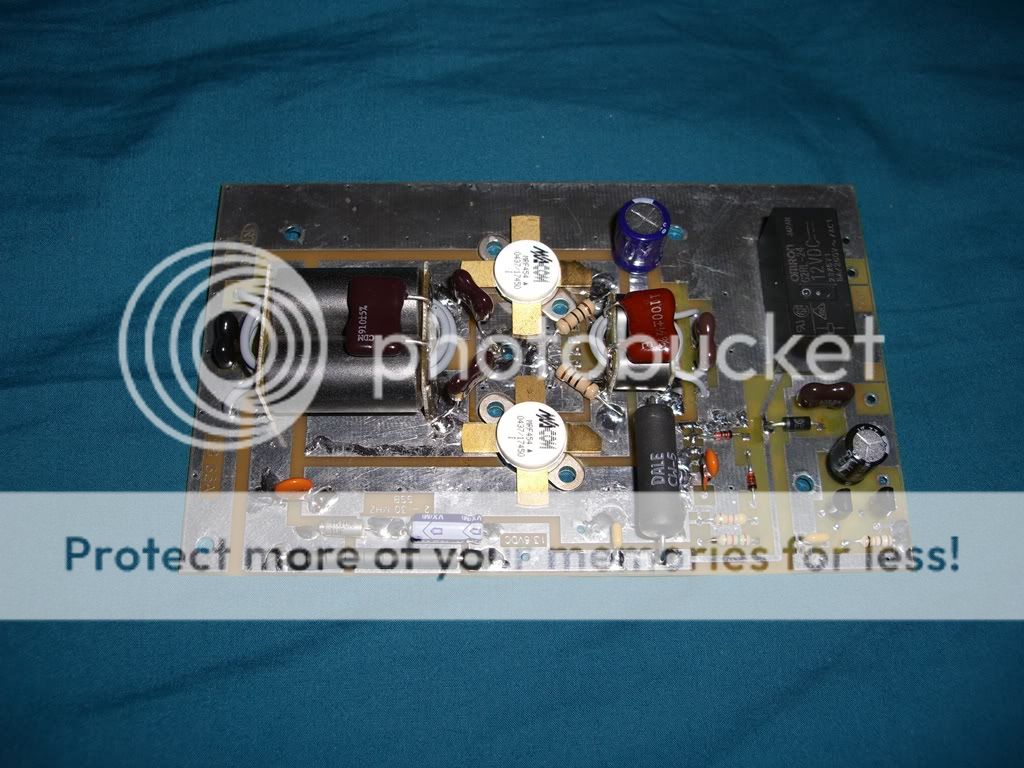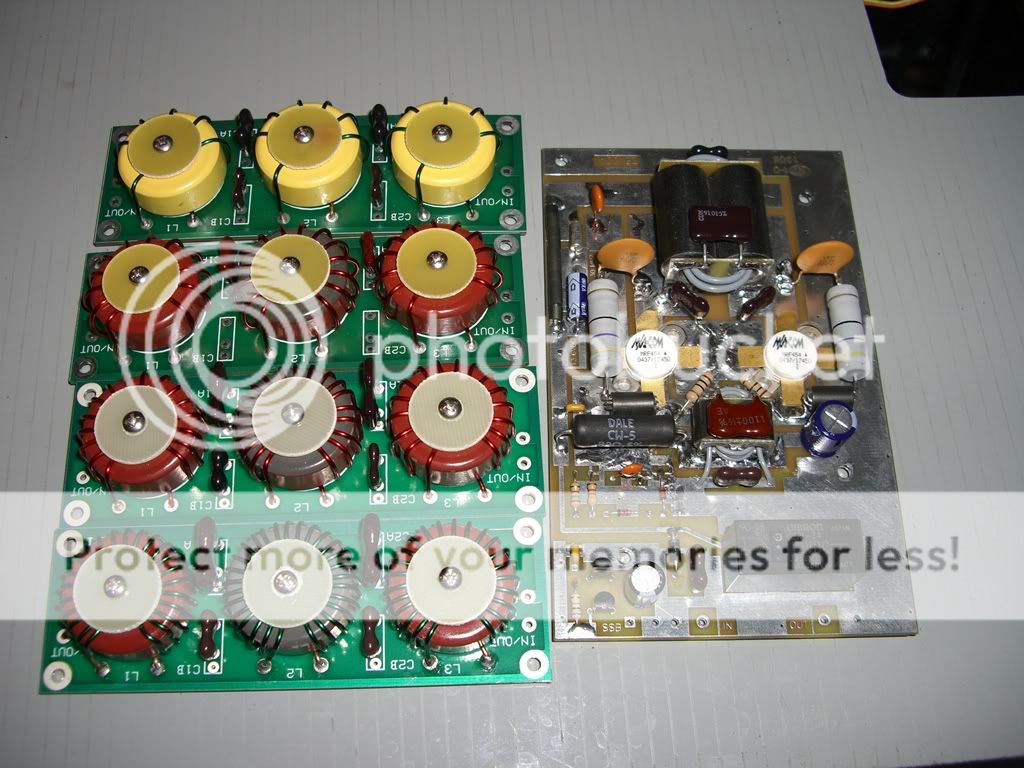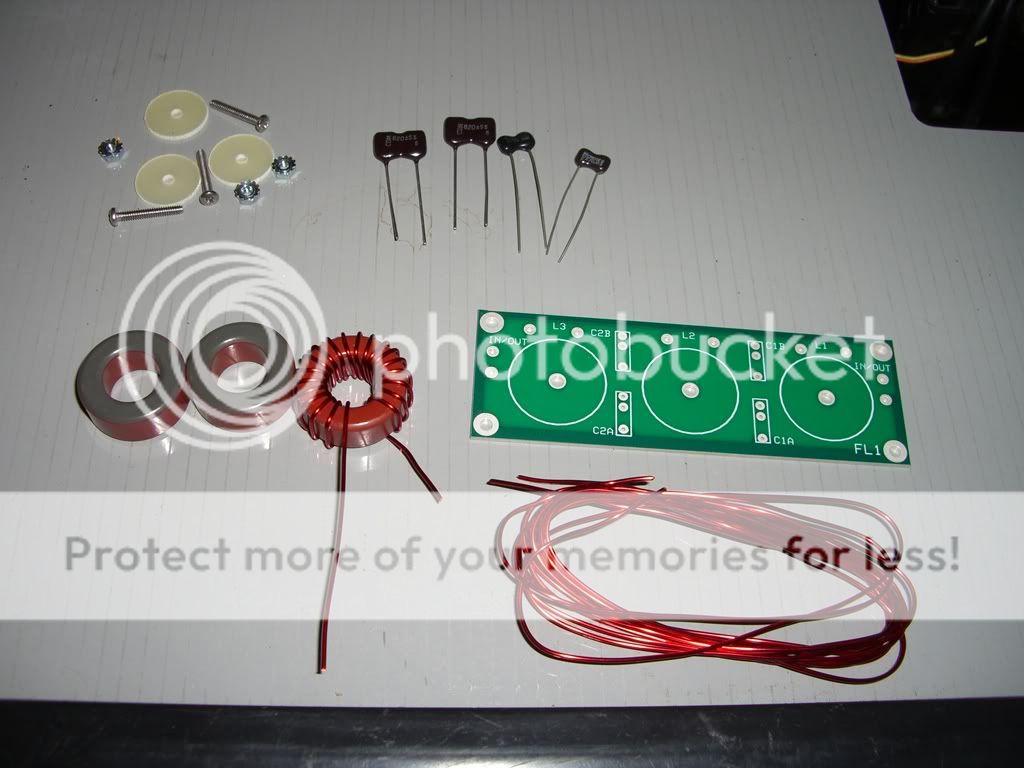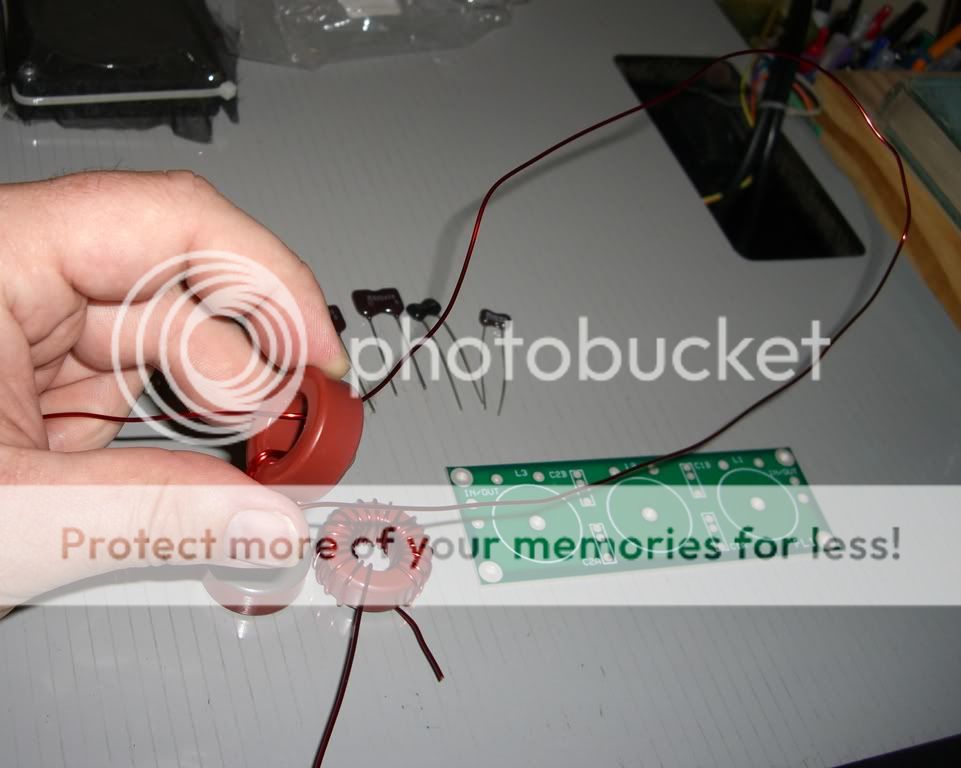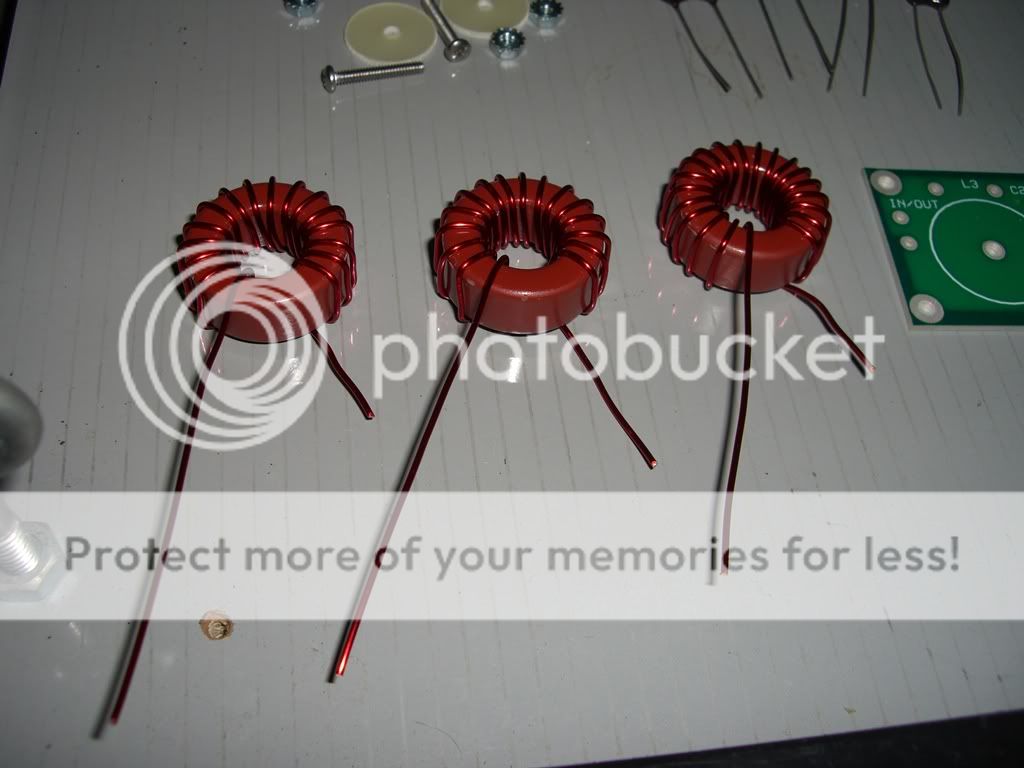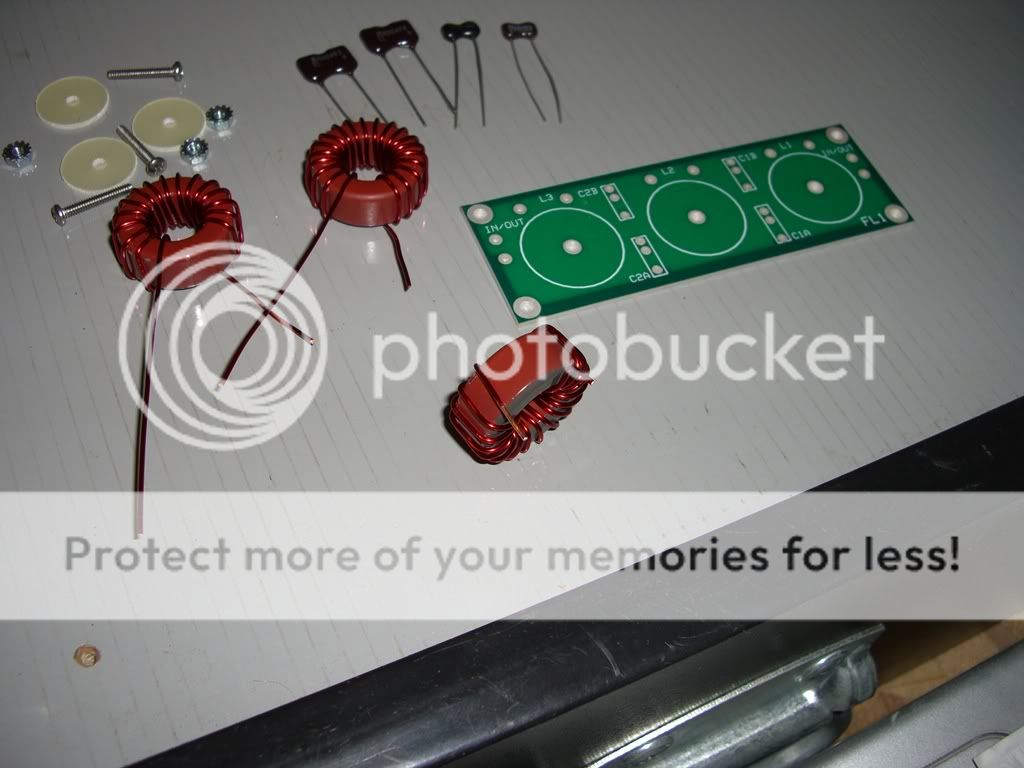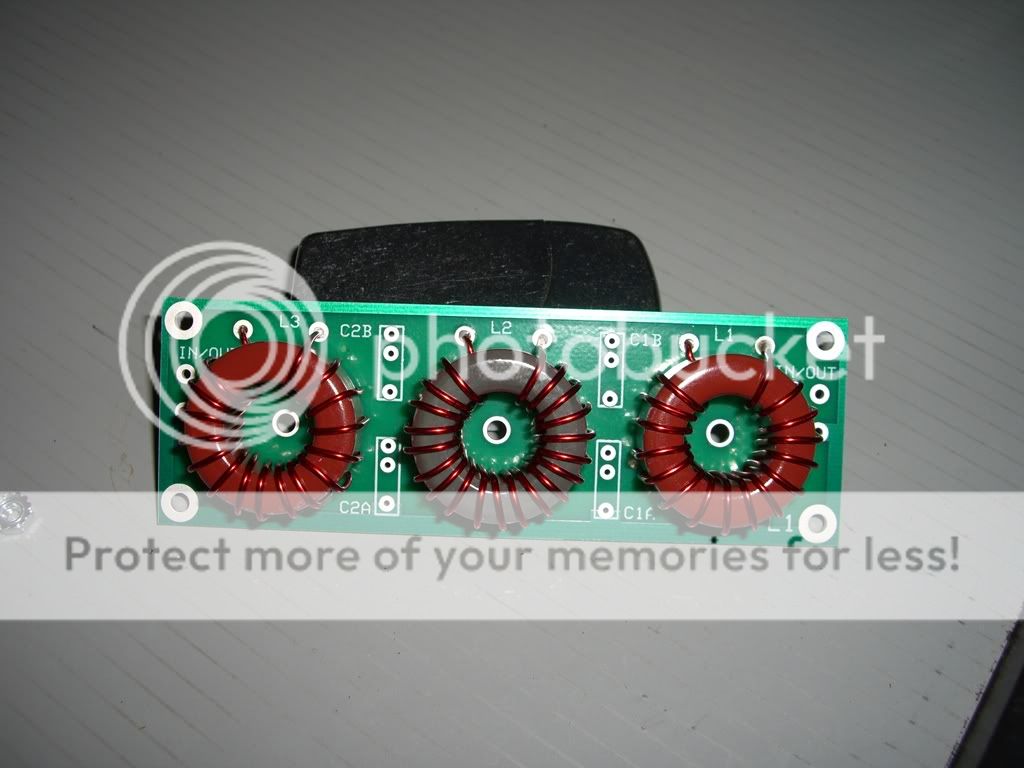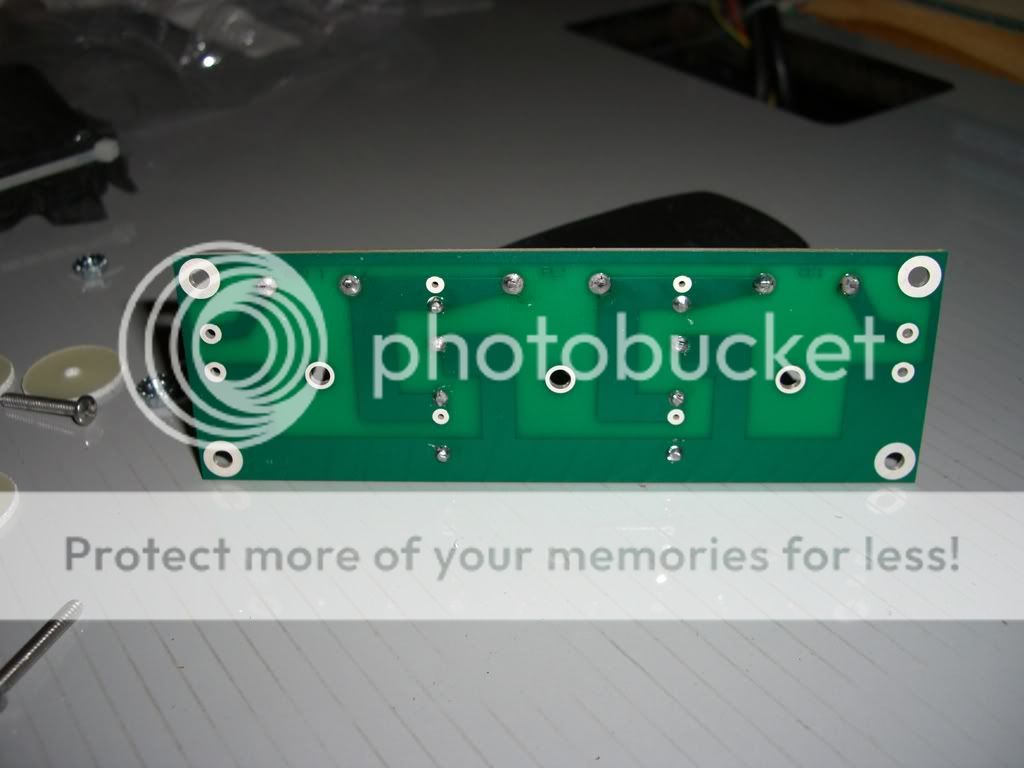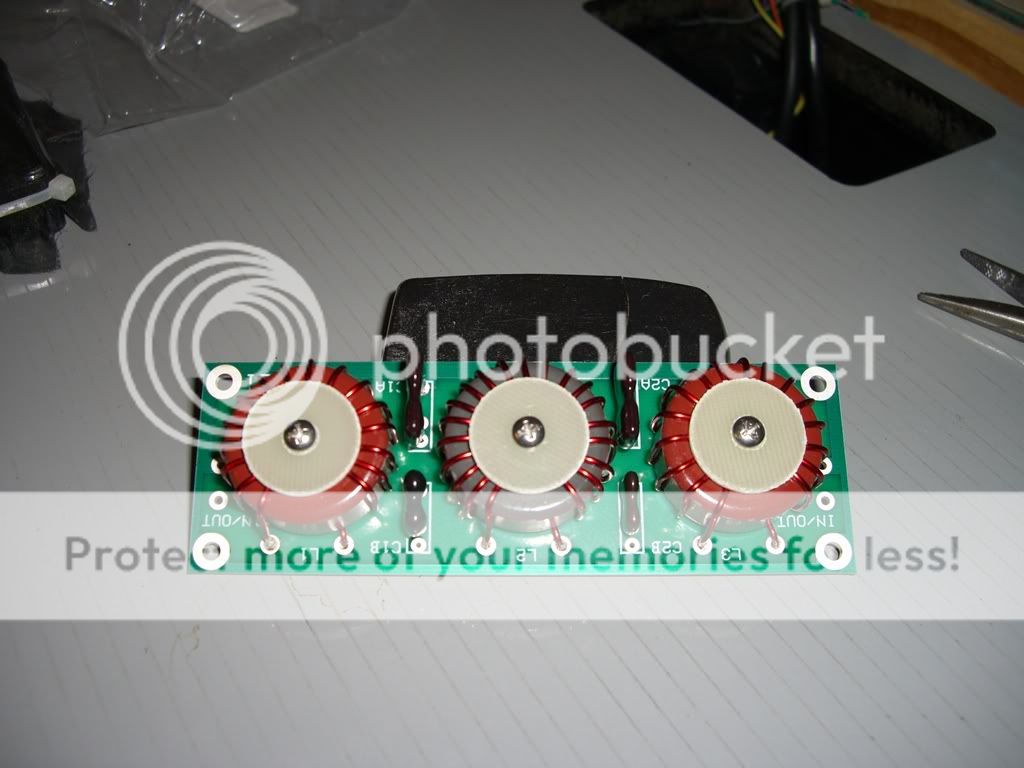More stuff:
First off, let me post a couple things that I should have posted right off the bat since I can't edit the OP anymore.
The complete kit for the EB63a amplifier and all 6 filters can be purchased quite reasonably from Communication Concepts, the amp
here and the filters
here. This is just in case anyone else wants to try their hand at building one of these kits.
It's absolutely worth browsing their other products. they have several amplifier kits to choose from, most of which are better than the EB63. The pricing of their kits isn't bad either..
Regarding the filters:
I'm laying out a bit of information about the low-pass filters (LPFs) because they are an important part of a solid-state amplifier setup, either mounted inside the amp or built as an external band-selectable accessory. There is also generally a lot more info to be found on building amplifiers than building filters, especially in the CB world.
LPFs are important because they help remove unwanted harmonic junk from an amplified signal, which helps keep noise down across the radio spectrum. This helps all radio operators in obvious ways. They are also a component that's not often found in CB-type solid-state amplifiers (although some manufacturers include them), which is unfortunate since they aren't really very hard to design or build, especially with the software available today.
ELSIE filter design software and information for designing custom filters from scratch:
The filters I've used here are a kit, but for those interested in using software to design your own filters specific to your application,
ELSIE works really well. It's simple, free and very easy to use. For most 2+ transistor RF amplifier applications, a simple 5 pole
Chebyshev filter either
capacitor-input or
inductor-input can be used. This information can be entered directly into Elsie, along with a
Ripple Bandwidth of XXMhz (can be any number depending on the band to be used, for CB it would be 27), an
Order (N)[7max] of 5 and an
Input Term of 50 (for 50 ohm impedance to match the amplifier and transmission line). Bold words above are the actual functions in the ELSIE software, and you can see exactly where to enter them in the first screen of the program after you select "
New Design" from the opening menu. Input the above figures and hit the "schematic" button at the top of the screen and BAM!, you've got a filter schematic ready to be built. To find what cores are best for your application, consult
toroids.info. Once you've got a core picked out, you can usually just enter the part number on ebay and find them. You select toroid cores based on your frequency of operation and your power handling requirement. For the shorter wavelength bands (20m and up) air core coils can be made simply by winding heavy-gauge magnet wire around a cylindrical form. Owning an L/C (inductance/capacitance) meter is a must when hand-winding cores for a custom design, but they can be had fairly cheaply on ebay or Amazon.
Here's a little more info on building the filters:
The toughest part about building the filters is winding the toroids.. particularly for the longer wavelength bands. I started with 160m since it involved the most turns of wire around the ferrite toroid core, namely 28 turns on the middle coil and 23 turns on the outer coils. The pics I've posted here were taken while building the 80m coil, which required 20 turns on the middle coil and 16 turns on the outer coils.
A helpful guide on how to wind toroids can be found here.
Basically It's just like you would think. You just pass the wire through the toroid core over and over, pressing the wire against the core with each turn so it's snug against it. Most coils are wound clockwise if it's not stated otherwise. To make sure you're winding clockwise, start by holding the toroid with the hole facing you. Take the wire and pass it through the hole from the back so that it passes through the hole towards you. Pull the wire through almost to the end, with a couple inches left over. Hold the wire tightly and wrap it down and around the core, passing again through the core to the right of the first pass. Holding the core so that the hole is facing you, then winding to the right after passing the wire through the core from the back ensures the the wire is wound in a clockwise direction. To verify this, you can compare the first few turns to the pictures here to see that the leads are on the same side of the coil.. these coils are all wound clockwise. A counter-clockwise coil will end up with the leads on opposite sides. The direction doesn't make a difference in the value of the coil, but it does ensure that your coils can all be mounted the exact same way. Once the coils are wound, you must strip the enamel insulation off the leads (I use an x-acto knife to scrape it off) and tin the leads with solder to ensure the best connection once it's soldered into a circuit. RF can be very senstive to bad connections.
Capacitors:
The capacitors are typically dipped silver-mica or ceramic disc, with silver-mica being preferred due to stability. The values provided by design software do not always match up to a manufactured capacitor, so often multiple capactors are used in parallel to achieve special values. Parallel capacitors add up directly in terms of value.
here's a few pics of the build process:
This shows all the parts for the 80m filter kit:
Winding the toroids:
Fully wound toroids (can be used as reference for clockwise windings):
Toroid with leads cut and positioned to fit the PCB:
Toroids soldered in place:
Back of board (to show circuit):
All Done!
not very hard.. More to come soon on mounting and wiring everything up!
